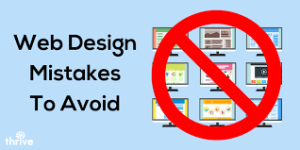How many online businesses fail? Well, approximately 20% of new online businesses fail during the first two years, 45% within the first five years, and 65% within the first ten years, according to the BLS (Bureau of Labor Statistics). Only 25% of newly founded businesses survive for 15 years or more. These statistics are higher even for online businesses. But do you know why?

Operating an online business involves a lot of different factors. As a result, it is difficult to forecast success or failure. We have seen innumerable businesses go out of business. Before launching your own internet business, it’s crucial to know these 7 reasons why online businesses fail, so you can prevent yours from going under.
Welcome to the Online Space
The internet has made it possible for businesses from different countries to sell to customers all over the world. This has led to an increase in branding, sales and customer base of various businesses.
There are many ways that businesses can connect to their customers online, such as through social media platforms like Facebook, TikTok or Twitter, or through email services like Gmail or Hotmail. The internet allows businesses to create their exact customer personas.
The Internet has also given businesses the ability to collect the right feedback and measure the right metrics from their customers, in order to provide them with their required value.
7 Reasons Most Online Businesses Fail
Without a doubt, the internet has revolutionized how businesses prosper. “But are online businesses successful?” You may ask.
Of course, the answer is yes, but not everyone is successful. Before you start your own online business, it’s crucial to understand the various factors that contribute to the failure of most online firms. 7 of the most frequent reasons why online businesses fail are listed below:
1. They never launch
Yeah, we just have to start from here. This is by far the most common reason for failure. You spend months or years planning, researching, building and tweaking — but you never actually launch your business online. It’s easy to get lost in the details and never push the “publish” button on your website.
Yes, launching a business online can be a difficult and stressful process. If you’re not careful, you could waste a lot of time and money before finally launching your first website. But when you have made a little research and met with some people who have built successful online businesses, then it is time to start yours.
2. No passion for their offline business
So many people do not really care about what they’re doing. They’re just looking for another way to make money without having to work very hard or put in a lot of effort.
Please, If you don’t have a passion for what you’re doing and a desire to learn and grow, then it won’t last long online. Taking a business online still requires a lot of work, and if you are not ready to work hard, your business might fail too.
3. No clear vision of what they want their business to achieve online
How can anybody else know where you want to take your company if you don’t? Your business should have a clear vision for where it wants to be in five years, and this vision should be recorded somewhere (preferably somewhere public). This will help you stay on task and make sure that everyone is working toward the same objective.

It’s a typical scenario: After starting a business, you try to decide where to put your website or store. The issue is that most websites and e-commerce store never receive the traffic or sales they want since there isn’t a clear understanding of what they hope to accomplish for their businesses online.
It is impossible to build a website that will draw new users and bring in money without this goal. Instead, the majority of new companies make the error of creating a website that resembles every other website on the Internet. They have no understanding how to effectively use their website as a marketing tool.
4. Not Being Willing to Learn New Skills
Running an online business requires some skills that are different from running an offline business. You can’t just expect to start a business online and make a million dollars overnight. It takes time, effort and knowledge to do well. If you’re not willing to learn new skills or put in the necessary work, then you’re going to fail.
It’s hard to know everything about the Internet because it’s a continually evolving environment. Online success requires a constant willingness to learn new abilities; else, your company will quickly become obsolete.
5. Poorly defined target audience
You must clearly identify your ideal client before you start a business online. One major difference between online vs offline business models is- In your offline business, your customers see your product and come to you. In the online business, you go to find your customers. So, you must clearly know who you are looking for.
The customer base is the most crucial component of an online business. How can content or products be created to appeal to your customers if you don’t know who they are?
6. Giving up too early before seeing results
Most people decide to launch their own business because they are passionate about it or because they want to earn money doing what they enjoy. However, not everyone is cut out to launch their own company, and perhaps the reason is that they quit up too quickly when things don’t go as expected.
If you want to be successful in business, you can’t give up. Don’t give up on your goals if you don’t start to notice results right away! Every business needs time to become profitable; even Facebook had a difficult beginning.

7. Having unrealistic expectations
Unrealistic expectations are one of the primary reasons online businesses fail. The first wrong question many new online businesses ask is “how long does it take to start a business online and become successful?”
Many new business owners believe they can start their own internet business without any experience and become wealthy overnight.
They don’t know what they’re doing, but they want to make millions within a few months. This will not take place. Building a great internet business takes time, especially if you want it to be long-lasting and resilient. Before you begin anything else, you need to educate yourself about operating an online business.
Conclusion
The world has unquestionably changed. The days when consumers would pay more for a good or service just because it was made locally or by a reputable company are long gone. When it comes to internet shopping, customers now have more alternatives than ever before, and they also want quick and simple delivery of their purchases.
If you are planning to take your offline business online, you must take into account the above reasons why most online businesses fail and run from them.
.






